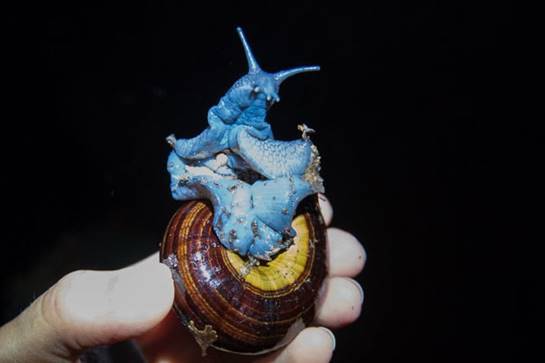Abel Tasman National Park is world famous for its golden beaches, sculptured granite cliffs, estuaries and native forests. But its native flora and fauna have suffered over the years, ravaged by fire, farming, logging, invasive weeds and predators. Without help, wildlife and habitat will continue to be lost.
That help is coming from The Abel Tasman Birdsong Trust, Project Janszoon, tourism operators, the Department of Conservation and the community working in partnership to protect and enhance the biodiversity in order to improve the experience of visitors to the Abel Tasman National Park.
Project Janszoon (named after explorer Abel “Janszoon” Tasman) is a privately funded trust set up to restore and preserve Abel Tasman’s rich wildlife for all to enjoy. It was launched in 2012 with the generous support of New Zealand couple Neal and Annette Plowman, who have since established the $100 million philanthropic NEXT Foundation. Project Janszoon has committed millions over 30 years to make transformational change in the Abel Tasman National Park.
Project Janszoon is unique – this was the first time philanthropists had offered to partner with a government department to restore the ecology of a national park, getting rid of pests and weeds, bringing back native birds and bush, and inspiring a culture of care for Abel Tasman.
The Abel Tasman Birdsong Trust / Te Poari Koro Tui launched as a charitable trust in 2007 with the vision that the forests and beaches of the Abel Tasman National Park are once again filled with the birdsong that awakens and delights visitors.
To restore and maintain the natural forest cover of the national park The Trust has administered almost $1 million in grant money to remove wilding pines and control a large suite of weed species in the Abel Tasman. The dead standing trees on the skyline and in bush catchments symbolise the success of this highly visible work. Over time native trees will take their place and restore the integrity of the natural environment.
The Powelliphanta Snail
The Powelliphanta snail is a giant of the snail world, growing up to 90mm across. Throw in the fact it is carnivorous and sucks up earthworms like spaghetti, it certainly not your common garden snail.
The Abel Tasman is home to the unique sub-species Powelliphanta hochstetteri hochstetteri (yellow based) which are in gradual decline. Northwest Nelson and Westland are national strongholds for Powelliphanta snails, and in the Park they are found in the beech forest habitat at Waterfall Creek, Wainui Valley, Jenkins Creek, Evans Creek and Glennies Clearing.
Powelliphanta are among the largest snails in the world but are one of our most threatened invertebrates as they are very vulnerable to possums, rats, pigs, hedgehogs and thrushes. They are particularly attractive with their colourful yellow, brown and black patterned shells. During the day you are most likely to see an empty, usually damaged shell as the snails are nocturnal and live buried in leaf mould or under logs, only coming out at night to forage and mate.
A number of small, localised colonies also occur near the mouth of several large rivers that originate in the high country of the Park and these snails are thought to have been dispersed in floods. You may see them on the Wainui Hut or Harwoods Hole tracks, or at Moa Park.

The Cache
The published coordinates will take you to a sign containing information about some of the work done by The Abel Tasman Birdsong Trust here you will find all you need to get the coordinates for this multi
Looking at the place names on the map (don't count the islands), starting at the bottom call the first name "A", the second "B" and so on. Count the number of letters in each name ignoring "Bay" and "Cove".
The Cache location is S40 59.UVW E173 00.XYZ
U = C - 3
V = F - 1
W = G - 8
X = B
Y = H
Z = A - 3
Check sum = U + V + W + X + Y + Z = 28
Please make sure the rocks are placed back in tight to stop wekas from muggling the cache, we all know they love to eat snails.